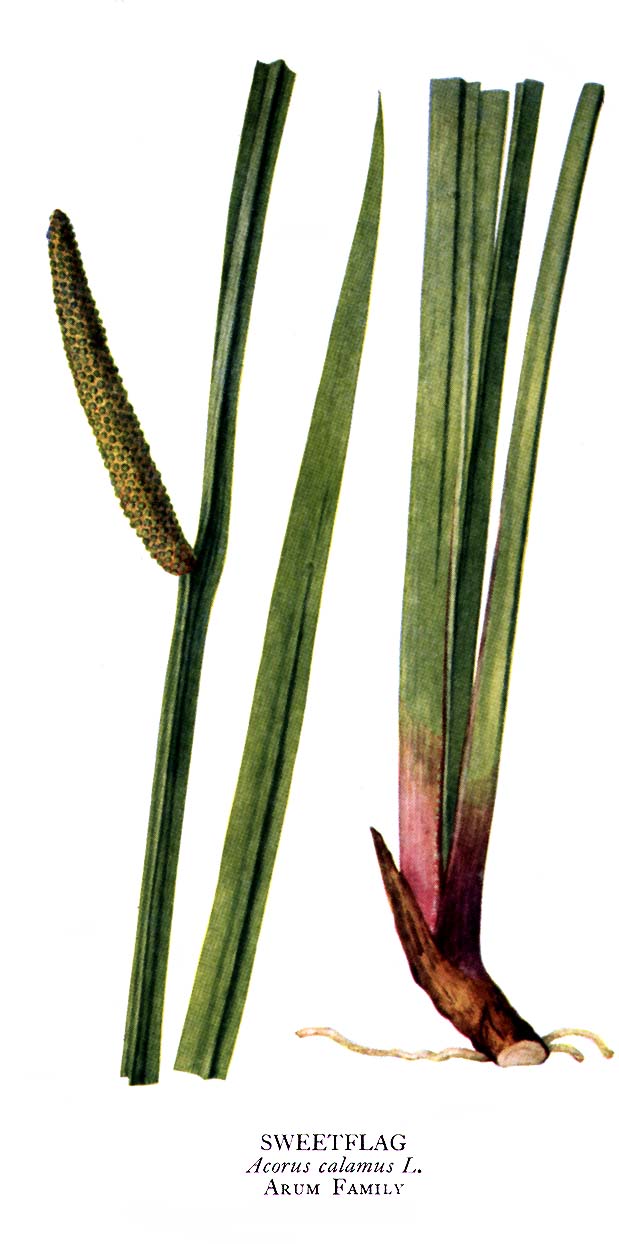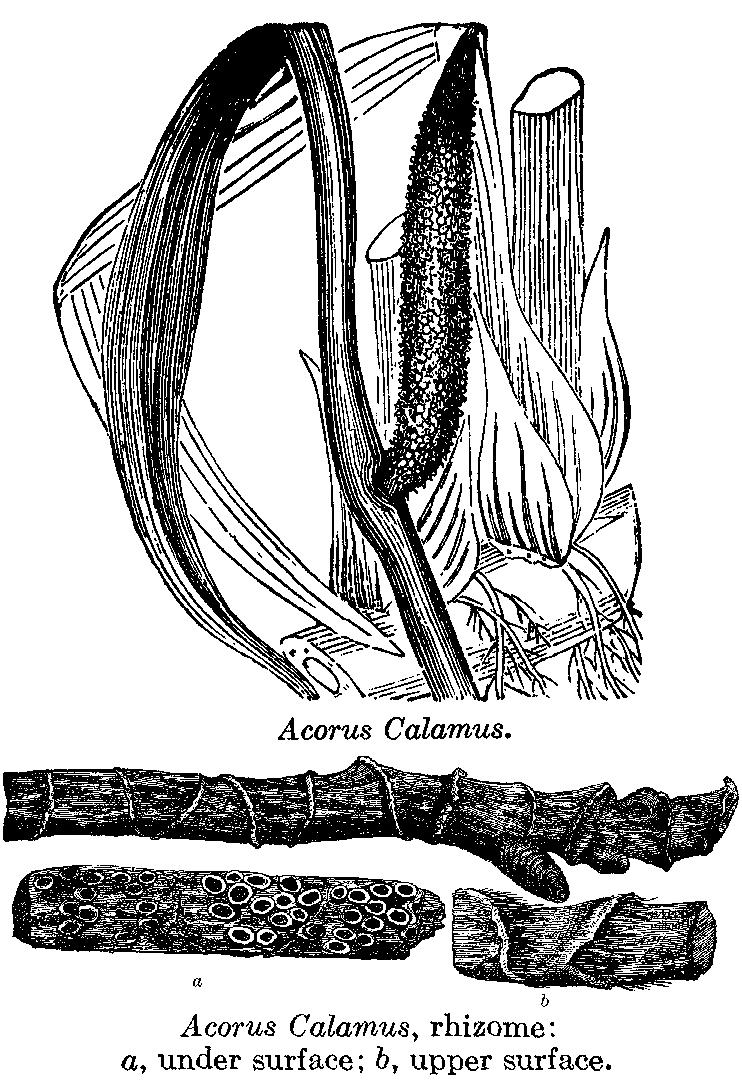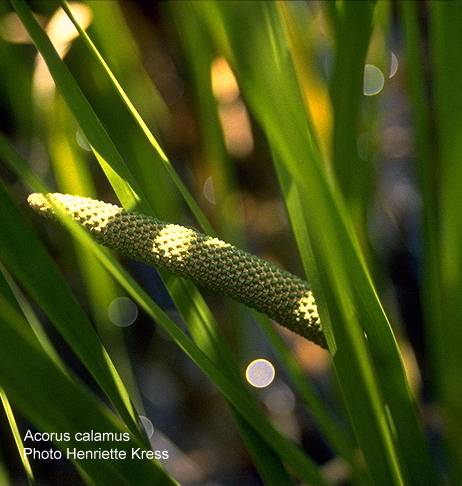
![]()
Acorus Calamus "Calamus, S Sweet Flag" Cattial-like, strongly scented. Used as a mild stimulant and for perfume manufacturing, NOT SOLD FOR CONSUMPTION. Plants $10
![]()

![]()
Acorus calamus - Sweet Flag: A native of Europe, naturalized in Britain, growing on the shallow edges of ponds and in most soils. The rhizomes, harvested in autumn or spring, are edible and can be used as a substitute for ginger, cinnamon or nutmeg - in the past the rhizomes were candied and used as a sweetmeat. The inner portion of young stems can be eaten raw and young leaves can be eaten cooked. Other virtues of this plant include its mature leaves, which are insect repellant, the lower stem and rhizome, which can be dried and used to scent clothes, cupboards etc, and an essential oil which can be extracted from the rhizome.
![]()
Acorus Calamus (Sweet Flag) Aromatic roots used medicinally and ritually by Algonquins, Cree and other N.E. Indian tribes. Broad grass-like leaves to 4' tall with finger-like flower. Likes moist soils, found naturally growing by or in streams and lakes. Dried root 2.20 oz., 17.63 lb., Essential oil -1/2 oz - 16.30, Seed pkt. - 2.00, Plant - 7.00
![]()
Acorus calamus
"Calamus"
"Calamus is a big, smelly plant with sword-shaped leaves and small, yellow/green flowers. Lives near swamps and banks in europe, asia, and north america.
"USAGE: The roots are collected in late f-all or spring and washed, the small hairs are removed and the root is dried at low temperature. The root could be chewed or chopped and prepared as tea. Dosage is from 5-25 cm of the root. The material decomposes and is inactive after one year. Must be stored cool and dry.
"ACTIVE INGREDIENTS: Asarone and beta-Asarone
"EFFECT: A piece of 5cm (thick as a pen) is stimulating and evokes cheerful mood. A 25cm piece may lead to altered perception and hallucinations. Calamus is also an aphrodisiac, especially when used as an additive in your bathing-water.
"SECONDARY EFFECTS: Calamus should not be used with MAO-inhibitors! Some aboriginal tribes chew the roots as stimulant and for mouth-hygiene. No secondary effects were reported. Some experiments seem to indicate that extreme amounts of calamus oil lead to a higher risk of cancer in rats. No similar effects are reported for humans.
"VARIETIES: There are three types of calamus, of which the one sold in Germany does not contain beta-Asarone. The amount of essential oil differs from 1.7% to 8.7%. The amount of beta-Asarone differs from 0-96% of the oil. European, asian and north american types show different compositions, asian calamus is considered to be more sedative, north american more stimulating. The calamus sold in Germany is not psychoactive; this is why J. Ott suspects other unexpored substances in the north american types."
"MISC.: The BTM-Kurrier reports in issue 1/95 that Calamus is a better carrier for hemp than tobacco. The toxic ingredients are better compensated, for example the sedative effects of mediocre or bad hash are removed. Calamus was often used in absinthe."
![]()

![]()
 Wildflower
Seed For Sale
Wildflower
Seed For Sale